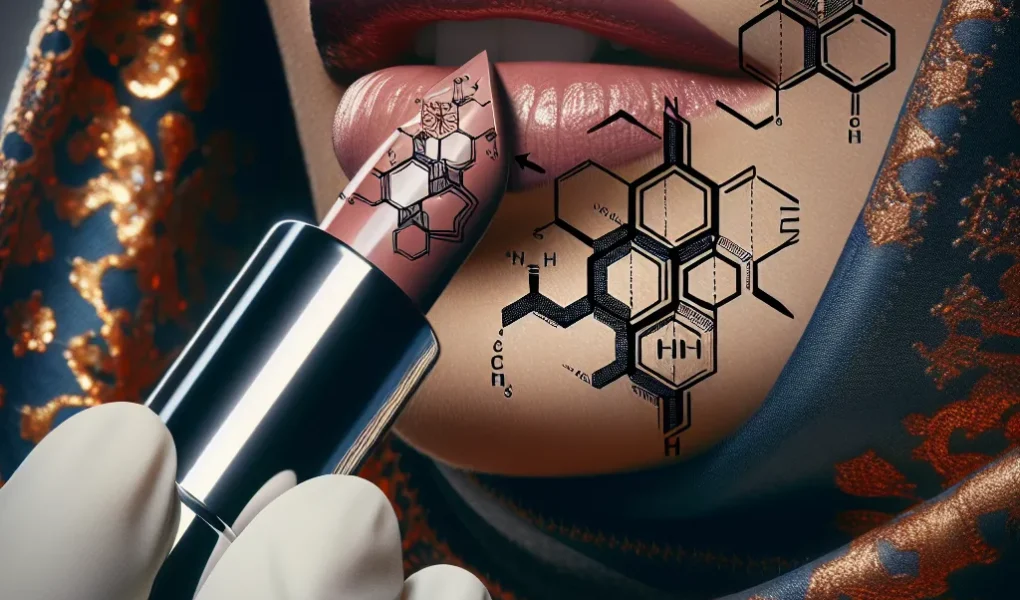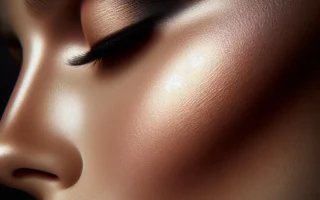The Chemistry of Long-Lasting Lipstick
The chemistry of long-lasting lipstick is a fascinating subject that delves into the intricate formulations behind its staying power. One key ingredient in many long-lasting lipsticks is a type of film former, which creates a thin, flexible layer on the lips to lock in color and prevent smudging. This film former is often made up of various polymers and silicone derivatives, which work together to provide a durable and transfer-resistant finish.
Analogous to the top coat used in nail polish, this film former in long-lasting lipstick acts as a protective barrier, helping the color stay vibrant and intact throughout the day. Just as a nail top coat seals and extends the wear of a manicure, the film former in long-lasting lipstick plays a similar role, ensuring that the lip color remains fresh and flawless.
To learn more about the innovative formulations of long-lasting lipsticks, you can explore the Inglot Cosmetics website by clicking on the following link: nail top.
Join us to uncover the science and artistry behind long-lasting lipstick, and discover the secrets to a beautifully enduring lip color.
The Chemistry of Long-Lasting Lipstick
Long-lasting lipstick has become a staple in the beauty industry, offering consumers a convenient and reliable option for all-day wear. The science behind long-lasting lipstick is multifaceted, with the chemistry of these cosmetics playing a crucial role in their longevity. At the heart of long-lasting lipstick formulation are a few key ingredients that work together to create a durable and resilient product.
The primary components responsible for the longevity of lipstick include film-forming agents, volatile silicone oils, and pigments. Film-forming agents such as acrylates copolymer and polymers create a flexible layer on the lips, ensuring that the color adheres and stays in place for an extended period. Volatile silicone oils contribute to the quick-drying nature of long-lasting lipstick, allowing the product to set rapidly and form a smudge-proof finish. Additionally, pigments are finely ground particles that provide the intense color payoff and are trapped within the film-forming layer to maintain vibrant hues throughout the day.
Furthermore, the chemistry behind long-lasting lipstick involves the use of long-wear emollients and transfer-resistant ingredients. These components impart a smooth and hydrating feel to the lipstick while also minimizing color transfer onto cups, utensils, or clothing. By incorporating these advanced formulations, cosmetic chemists can engineer lipsticks that offer both enduring color and comfortable wear.
In conclusion, the chemistry of long-lasting lipstick is a sophisticated blend of film-forming agents, volatile silicone oils, pigments, long-wear emollients, and transfer-resistant ingredients. These elements work in harmony to create a lipstick that maintains its rich color and finish throughout the day, providing consumers with a reliable and long-lasting cosmetic option.
Formulation Secrets of Long-Wear Lipsticks
When it comes to long-lasting lipstick, the formulation secrets play a crucial role in creating a product that stays put for hours on end. The key to the longevity of these lipsticks lies in their unique formulation, which typically includes a combination of waxes, pigments, and film-forming agents.
One of the formulation secrets of long-wear lipsticks is the use of long-chain polymers, such as acrylates, that form a flexible film on the lips. This film not only helps lock in the color pigments but also provides a barrier against moisture, oil, and other factors that can cause the lipstick to fade or smudge.
In addition to polymers, the inclusion of waxes, such as beeswax or candelilla wax, helps give long-lasting lipsticks their smooth and creamy texture while also contributing to their staying power. These waxes create a protective layer on the lips, ensuring that the color adheres well and resists transfer.
Furthermore, the high concentration of color pigments in long-wear lipsticks enhances their longevity. These pigments are carefully selected and milled to ensure maximum color payoff and adherence to the lips, resulting in a rich and vibrant finish that lasts throughout the day.
Overall, the formulation secrets of long-lasting lipsticks involve a meticulous balance of ingredients, including polymers, waxes, and pigments, to create a product that not only delivers intense color but also remains intact for extended periods.
The Physics of Lipstick Adhesion
When it comes to long-lasting lipstick, the adhesion of the product is a crucial factor. The physics behind lipstick adhesion is a fascinating subject that involves the interaction of various forces at the molecular level. One of the key aspects of lipstick adhesion is the intermolecular forces between the lipstick and the skin on the lips.
Lipsticks are formulated to have a certain degree of adhesion to the skin, which is achieved through the use of ingredients that promote adhesion, such as waxes and oils. These components help the lipstick adhere to the lips by creating a strong intermolecular force between the lipstick and the lip surface.
Moreover, the texture and rheology of the lipstick play a significant role in its adhesion. The viscosity and thixotropy of the product affect how it spreads and adheres to the lips. By understanding the rheological properties of lipsticks, cosmetic scientists can design formulas that optimize adhesion and longevity.
Additionally, the surface energy of the lips and the lipstick also affects adhesion. The surface energy differential between the lipstick and the lips influences how well the product adheres. Formulators take this into account when developing long-lasting lipstick formulas to ensure optimal adhesion.
Understanding the physics of lipstick adhesion is essential for creating long-lasting and high-performance lip products that stay put for extended periods. By manipulating the intermolecular forces, rheological properties, and surface interactions, cosmetic chemists can engineer lipsticks with superior adhesion, providing consumers with a reliable and enduring makeup solution.
Understanding the Science Behind Lipstick Longevity
Understanding the science behind lipstick longevity is crucial for creating long-lasting lip products that can withstand the wear and tear of daily activities. The key lies in the formulation and the interaction of ingredients with the lips’ natural oils and moisture. Long-lasting lipsticks often contain film-forming agents such as silicone derivatives and polymers, which create a flexible and adhesive film on the lips. These films help the lipstick adhere to the lips and resist fading or transferring.
In addition to film-forming agents, long-lasting lipsticks also rely on pigments with high color intensity and a strong affinity for the skin. This allows the color to remain vibrant and true throughout the day. Furthermore, the inclusion of emollients and moisturizing agents helps to prevent the lips from drying out, maintaining comfort and preventing the lipstick from flaking or cracking.
Another crucial aspect of long-lasting lipstick is the use of volatile oils and solvents that evaporate after application, leaving behind a thin layer of color that adheres to the lips. This layer enhances the longevity of the lipstick and minimizes the need for frequent touch-ups.
Understanding the science behind long-lasting lipstick involves a careful balance of film formers, pigments, emollients, and volatile ingredients to create a product that delivers extended wear without compromising comfort or color intensity. By leveraging these scientific principles, cosmetic companies can develop lipsticks that provide long-lasting color and comfort, meeting the demands of consumers for reliable and durable lip products.



